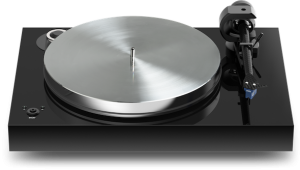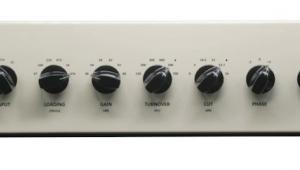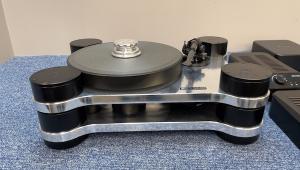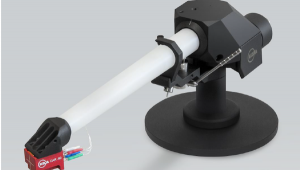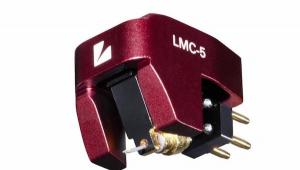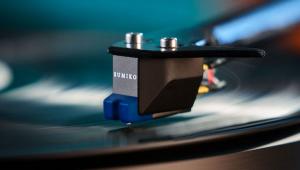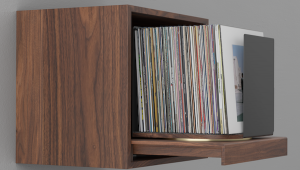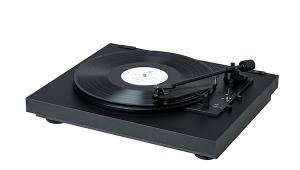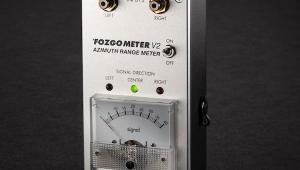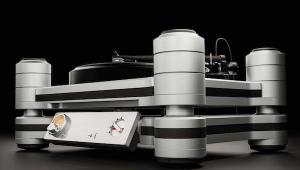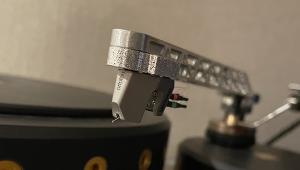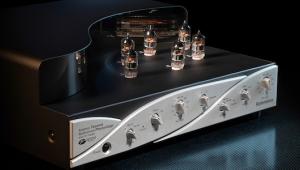MC PRO Phono Preamp by Michael Fidler and Classic Audio
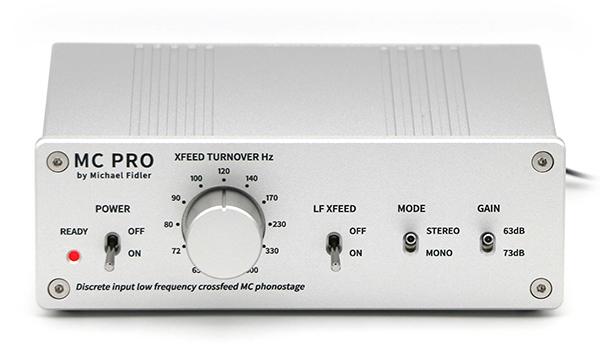
A few months back, we reported on the availability of Michael Fidler and Classic Audio’s latest and greatest PRO Series offering, the MM PRO phono preamp, which you can read all about right here. And now, Fidler and company have duly brought forth the MC PRO phono preamp equivalent.
According to Fidler himself, “despite the much lower input level, the MC PRO pushes the practical noise floor down below that of even the best moving magnet [MM] systems. The 60 times lower coil resistance generates 25 times less thermal noise voltage than their moving magnet counterparts, but this requires an input amplifier quiet enough to cope with the 10 times lower level.”
Just like the MM PRO is, the MC PRO is handmade in Kent, England and utilizes all through-hole technology. However, the MC PRO’s socketed hybrid input amplifier combines discrete bipolar input transistors with a servo-stabilized IC op-amp driver with the intention of halving the input noise of “the very best integrated circuits currently available for this critical point in the signal path” (Fidler’s words).
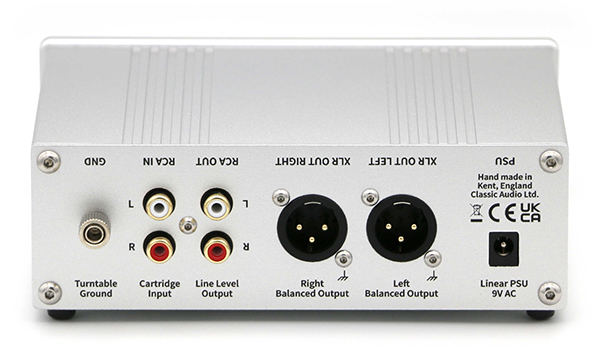
Fidler further points out that conventional MM/MC combination phono stages degrade the MC noise floor by feeding a low gain MC head amp through the MM input, adding noise from both inputs — and he notes that, by amplifying the input signal by over 100 times in the first stage (as opposed to just 10 times for MM level in combination phono stages), the first stage’s output in the MC PRO is “immunized” against the noise of the next stage. This dedicated architecture is said to permit a signal-to-noise ratio of 81dB against a 0.5mV input signal.
Precise RIAA accuracy to within 0.1dB using telecoms grade polystyrene film capacitors in a dedicated shunt feedback amplifier stage is said to occur right after the hybrid head amp. Superior to the more common 0.5dB, that spec reading gives very low coloration and exceptional channel balance in the mid-band where the 500Hz and 2112Hz RIAA turnover points lie. Unlike passive implementations, active RIAA EQ is intended to handle 140 times the nominal level at 20kHz, in order to avoid overload.
Fully defeatable low-frequency crossfeed is further said to reduce “vertical vinyl roar,” while a turnover point control on the front panel allows additional user-adjustment options. A mono/stereo toggle switch is included on the front panel, bridging the two channels together when enabled.
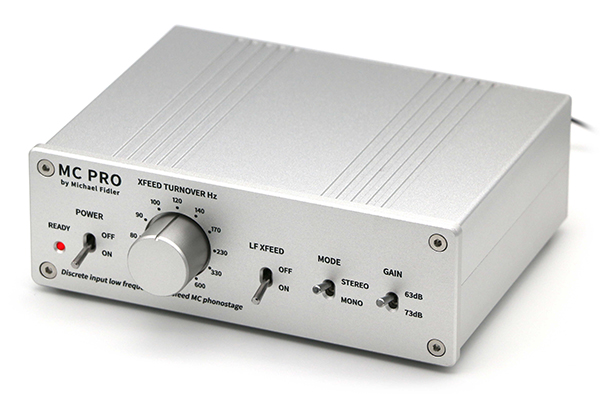
Vinyl surface disturbances are attenuated 14 times at 10Hz by the 23Hz 3rd order subsonic filter, which is said to stop them from destabilizing and overloading amps and loudspeakers generating distortion. Hand-matched film capacitors look to create a flat bass response above the cut-off point, intending to eliminate the typical response variations and resonances of contemporary filters.
Gain distribution in the triple-stage design yields less than 0.0005% distortion. The balanced output drives a 2kΩ line input to 20V RMS, thanks to ±17V internal power supply rails.
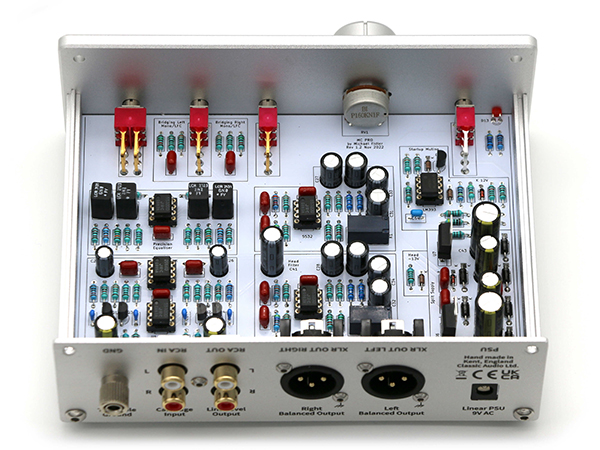
Using Panasonic electrolytic capacitors, the linear-split power supply takes the power transformer and its ensuing magnetic fields out of the enclosure. The small external transformer also provides mains isolation. Splitting the internal power rails keeps non-linear amp power currents out of the ground path that could generate distortion. An analog comparator-based startup circuit keeps the Panasonic relays closed for 5 seconds while the hybrid head stabilizes, a procedure that’s intended to prevent any ensuing thuds and bangs when switching on and off.
The MC PRO is currently available to order worldwide direct from Classic Audio in the UK, with an SRP of $850 for the U.S. (import duties may apply), £650 in the UK, and €750 for EU countries.
The above MC PRO SRPs includes shipping to the respective regions as noted (other region prices will be calculated at the point of order). To date, Classic Audio deliver their products direct to customers in the U.S., EU, Australia, and India. Power supplies for 115V and 220V regions are also available to accommodate for all different mains voltages.
For more about the MC PRO, go here.
To order an MC PRO direct from the manufacturer, go here.
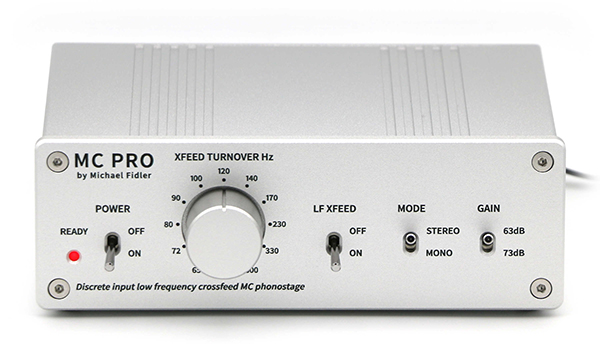
MC PRO PHONO PREAMP
$850 U.S. (£650 in the UK; €750 for EU countries)
Features & Specs
RIAA Accuracy: ±0.1dB, 40Hz to 22kHz
Channel balance: ±0.1dB, 40Hz to 22kHz
Signal-to-noise ratio (220Hz to 22kHzr): 81.5dB, ref 500µV, 10Ω cartridge
THD: <0.0005%, 20Hz to 22kHz, at 21V RMS
Maximum output (20Hz to 28kHz): 21V RMS (XLR), or 10.5V RMS (RCA)
Maximum input at 1kHz: 7.3mV RMS at 63dB, 2.3mV RMS at 73dB gain
Maximum input at 10kHz: 35mV RMS at 63dB, 11.3mV RMS at 73dB gain
Overload margin ref 500µV, at 1kHz: 23.3dB at 63dB gain
Overload margin ref 150µV, at 1kHz: 23.8dB at 63dB gain
Gain at 1kHz (RCA): 63.17dB, 1440x, or 73.1dB, 4520x
Gain at 1kHz (XLR): 69.19dB, 2880x, or 79.12dB, 9040x
Minimum load impedance: 1kΩ (RCA), 2kΩ (XLR)
Output impedance: 75Ω (RCA), 150Ω (XLR)
Input impedance: 120Ω
Subsonic filter: 23Hz, 3rd order, for –23dB at 10Hz
Low frequency crossfeed: 65Hz to 600Hz, –4.3dB to –21.6dB at 50Hz
Power consumption: 6W max powered on, 0.2W standby
Dimensions (w/h/d): 172 x 60 x 155mm
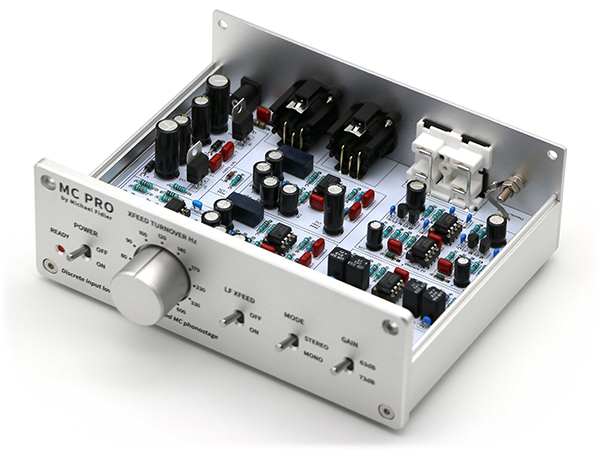
- Log in or register to post comments


